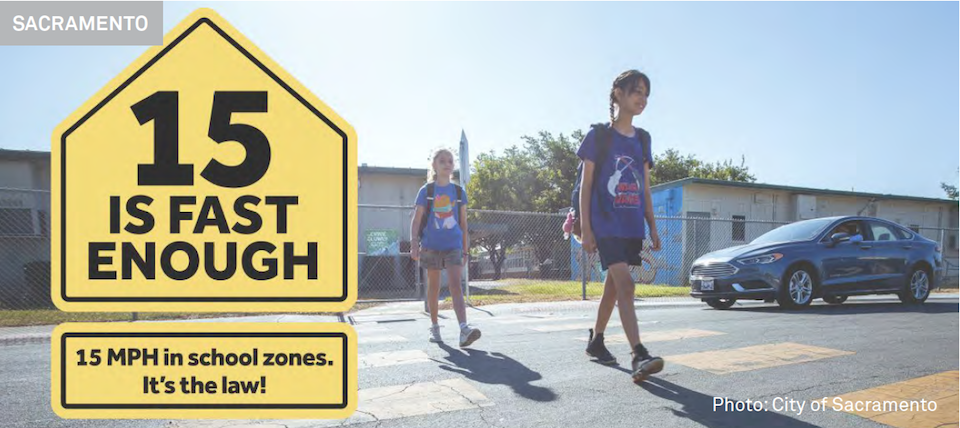Cities that have authority to set default speed limits have a number of options to improve safety on their streets. In some cities, setting the default limit citywide is the most effective approach. Citywide defaults provide a uniform, predictable limit that applies everywhere. They are relatively easy to implement and easy to explain to the public. Citywide limits can be combined with slow zones and with corridor limits on specific corridors to address conditions where a speed lower than the citywide default is necessary.
In cities where there is clear differentiation between major arterial streets and local or minor streets, cities may choose to set speeds by street type or category. Category-based limits allow cities to address significantly different street contexts but still create a predictable regulatory environment for drivers. Like citywide defaults, category-based defaults can be combined with slow zones and with corridor limits on specific streets.
In some states, cities do not have explicit authority to set their own default speed limits. These cities have different playbooks for aligning speed limits with their safety goals.
In states where the process for engineering studies is not codified in state law or practice, cities have asked for (or assumed) permission to use a locally-defined process such as the Safe Speed Study method, that is different from the 85th percentile method. In some cases, cities have used this same tactic to set default citywide or category-based speed limits by conducting “bulk studies” on a representative sample of similar streets in order to assess the appropriate speed for that category of street.
In the states where jurisdictions must set speed limits on most streets based on 85th percentile speeds, some cities have requested exemption from using the 85th percentile for specific streets (for example, streets identified in a high-injury network analysis). In these places, robust crash, fatality, and injury data collection is particularly important to make the case for exemptions.
In almost all states, cities have authority to create school slow zones. For example, in California, which codifies the use of the 85th percentile method to determine and enforce speed limits on streets across the state, the Vehicle Code allows all local jurisdictions to lower speeds in school zones that meet specific criteria. In 2019, Sacramento used this authority to reduce speed limits from 25 to 15 mph on 225 street segments across the city, even without the explicit authority to reduce default speeds citywide.
